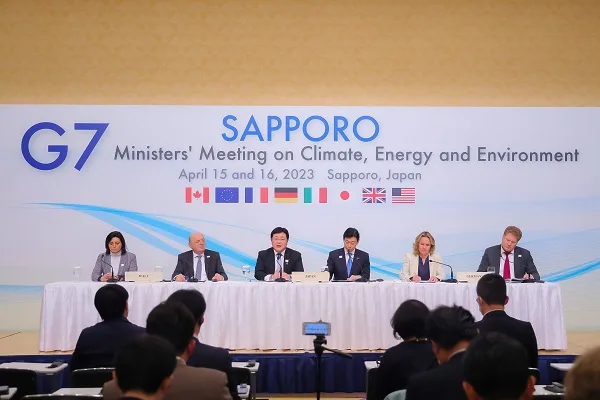G7 Explores Pathways Towards Decarbonization
From 15 to 16 April 2023, the G7 Minister’s Meeting on Climate, Energy and Environment took place in Sapporo, Japan. The meeting served to coordinate policies and to undertake joint actions to fight #ClimateChange and protect #Biodiversity.
Based on certain estimates, the G7 accounts for 40% of the world economy and produces 25% of global carbon emissions.
The G7 reiterated its commitment to rein in global warming to within a 1.5 C rise by cutting down greenhouse gas emissions, transitioning to green and promoting a circular economy. Furthermore, the G7 reaffirmed the goal to achieve net zero by 2050. However, G7 reframed the objective to achieve a ‘predominantly decarbonized power sector’ by 2035 without committing to abandon coal completely within a specific timeframe.
We will call on and work with other countries to end new unabated coal-fired power projects globally as soon as possible to accelerate the clean energy transition in a just manner.
Extract from G7 Climate Joint Communique 2023
In the 36-page communique released after the meeting, G7 agreed to scale up PV capacity to more than 1 TW by 2030. In addition, G7 shall add another 150 GW of wind energy capacity by 2030.
In addition, innovative technologies for renewable energies such as perovskite solar cells, floating offshore wind power and biomethane.
The G7 recognizes the growing importance of #CriticalMinerals for the clean #EnergyTransition. The G7 stresses the application of strong ESG standards to create responsible and resilient supply chains of Critical Minerals. Finally, the G7 issued a “Five-Point Plan for Critical Mineral Security” to tackle economic and security risks in that area.
By 2050, the G7 aims to reach net-zero emissions in the road sector. By 2035, all new light duty vehicles (LDV) sold will be Electric Vehicles. To support this move, the G7 shall track and support the implementation of vehicle charging infrastructure.
Back in 2009 at COP15, the developed countries pledged USD100 billion for the climate crisis. However, actual disbursement fell well short of the lofty target figure.

